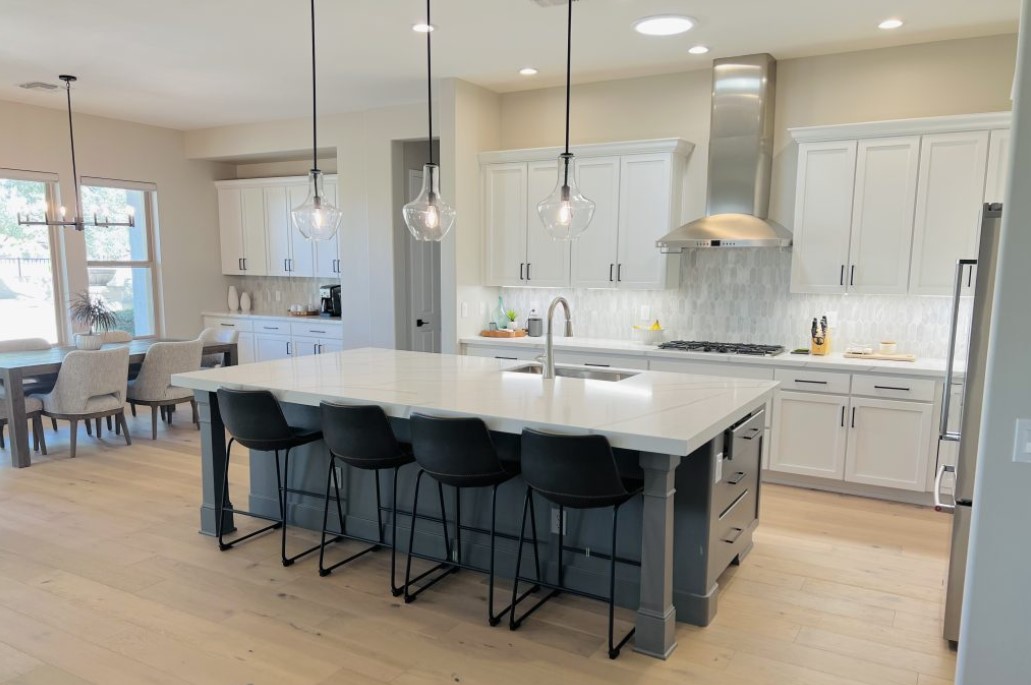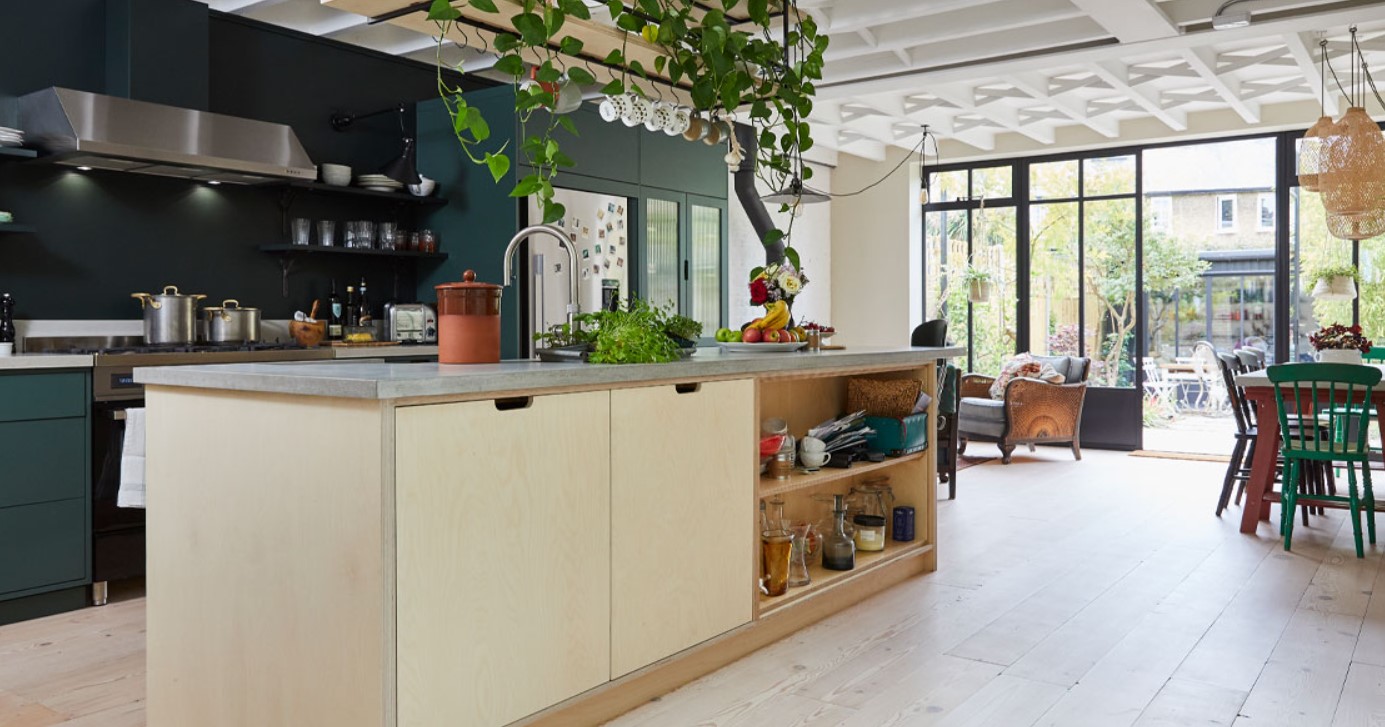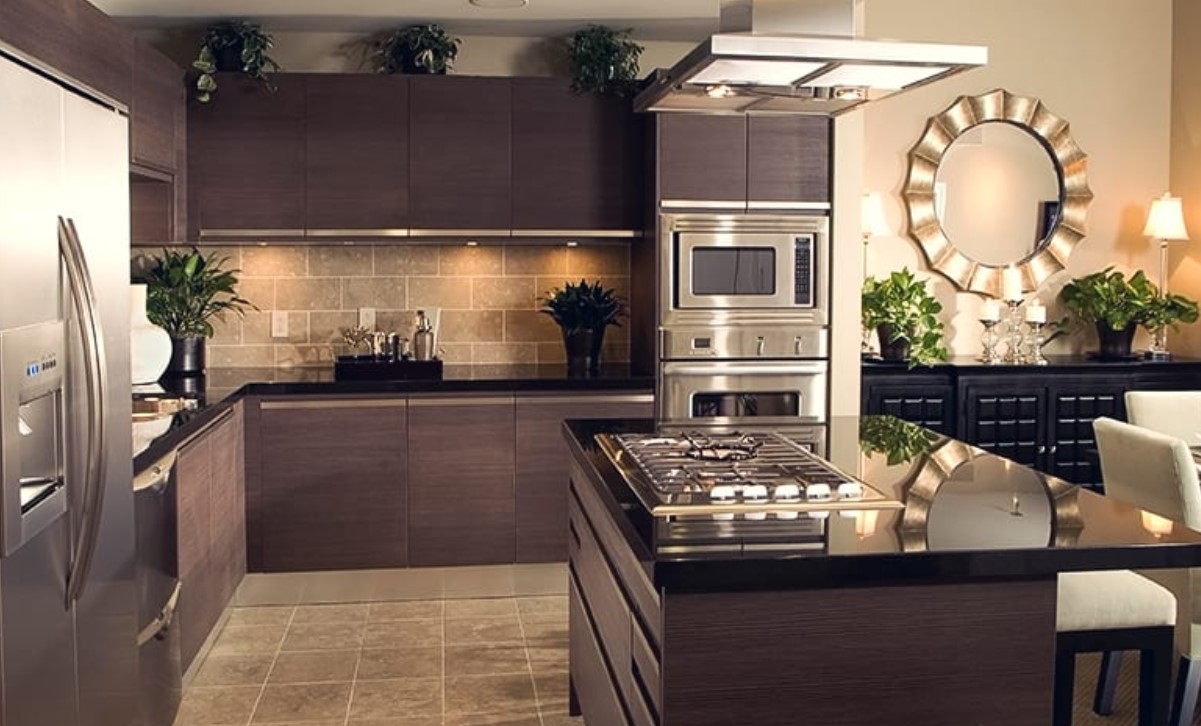The kitchen, often considered the heart of the home, is a space where functionality meets creativity. As we step into 2024, several new trends are emerging that promise to redefine kitchen design and functionality. Staying updated with these trends not only enhances the aesthetic appeal of your home but also improves the efficiency and sustainability of your kitchen space. This article delves into the top six kitchen trends of 2024, offering insights and inspiration for those looking to revamp their culinary spaces.
The Importance of Staying Updated with Kitchen Trends

The kitchen is the heart of any home. Staying updated with the latest kitchen trends ensures your space is both functional and stylish. Modern kitchens are more than just places to cook; they are social hubs where families gather.
Enhancing Functionality with Modern Designs
New kitchen trends focus on improving functionality. Smart storage solutions, like pull-out shelves and hidden compartments, make organizing easier. Energy-efficient appliances save money and reduce your carbon footprint. These innovations enhance daily life, making tasks quicker and more enjoyable.
Boosting Home Value with Trendy Upgrades
A modern kitchen can significantly increase your home’s value. Buyers are attracted to stylish, up-to-date kitchens. Features like sleek countertops, modern cabinets, and high-tech appliances are major selling points. Investing in your kitchen is investing in your home’s future.
Staying Ahead with Smart Technology
Integrating smart technology into your kitchen is a growing trend. From smart refrigerators that keep track of groceries to voice-activated assistants that help with recipes, technology makes cooking easier and more efficient. Staying updated ensures you benefit from the latest advancements.
Creating a Stylish and Inviting Space
Keeping up with kitchen trends helps you create a space that reflects your personal style. Whether you prefer a minimalist design or a cozy, rustic feel, there are trends to suit every taste. An updated kitchen is not only functional but also a beautiful place to spend time.
Embracing Sustainability in Your Kitchen
Sustainability is a key trend in modern kitchens. Using eco-friendly materials and energy-efficient appliances reduces your environmental impact. Consider installing water-saving faucets and recycling stations to further your commitment to the planet. A sustainable kitchen is a smart and responsible choice.
The Role of Color and Texture
Color and texture play a crucial role in kitchen design. Bold colors and unique textures can transform your kitchen into a vibrant and welcoming space. Current trends include matte finishes, mixed materials, and natural stone. These elements add depth and character to your kitchen.
Making the Most of Small Spaces
Even small kitchens can benefit from the latest trends. Clever storage solutions and compact appliances make the most of limited space. Open shelving and multifunctional furniture create an airy, spacious feel. Staying updated helps you maximize your kitchen’s potential, no matter its size.
Staying updated with kitchen trends is essential for creating a functional, stylish, and sustainable space. Embrace new technologies, designs, and sustainable practices to enhance your kitchen. Whether you’re renovating or just refreshing, keeping up with trends ensures your kitchen remains the heart of your home.
Trend 1: Sustainable and Eco-Friendly Kitchens

Sustainability is more than just a buzzword; it’s a movement that has permeated every aspect of our lives, including kitchen design. Sustainable kitchens prioritize the use of eco-friendly materials and energy-efficient appliances, contributing to a healthier planet.
Use of Sustainable Materials
The use of sustainable materials such as bamboo, reclaimed wood, and recycled metals is on the rise. These materials not only reduce environmental impact but also add a unique charm to the kitchen. Bamboo countertops, reclaimed wood cabinetry, and recycled metal fixtures are just a few examples of how sustainability can be stylish.
Energy-Efficient Appliances
Energy efficiency is a crucial component of sustainable kitchens. Modern appliances with Energy Star ratings consume less electricity and water, reducing utility bills and environmental impact. Induction cooktops, energy-efficient refrigerators, and smart dishwashers are becoming staples in eco-friendly kitchens.
Water-Saving Fixtures
Water conservation is another important aspect of sustainable kitchens. Water-saving fixtures like low-flow faucets and touchless taps help reduce water usage without compromising functionality. These fixtures are designed to provide efficient water flow while minimizing waste.
Benefits for the Environment and Homeowners
Sustainable kitchens offer numerous benefits. For the environment, they help reduce carbon footprints and conserve natural resources. For homeowners, these kitchens often lead to lower utility bills and a healthier living environment. Moreover, sustainable kitchens can increase the value of a home, making them a wise investment.
Trend 2: Smart Kitchens

Smart technology has revolutionized the way we interact with our homes, and kitchens are no exception. Smart kitchens incorporate advanced technology to enhance convenience, efficiency, and connectivity.
Types of Smart Appliances
Smart appliances are at the forefront of this trend. From refrigerators with touchscreens and inventory management to ovens that can be controlled via smartphone apps, smart appliances make cooking and kitchen management more intuitive and efficient. Other examples include smart coffee makers, automated lighting, and voice-activated faucets.
Integration with Smart Home Systems
The integration of kitchen appliances with smart home systems is becoming increasingly popular. Systems like Amazon Alexa, Google Home, and Apple HomeKit allow homeowners to control their kitchen devices with voice commands or through centralized apps, creating a seamless and interconnected home environment.
Benefits of Smart Kitchens
Smart kitchens offer numerous benefits, including increased efficiency, energy savings, and enhanced convenience. Automated cooking settings, remote monitoring, and voice controls streamline kitchen tasks, making daily routines easier and more enjoyable. Additionally, smart appliances often come with energy-saving features, contributing to overall household efficiency.
Future Prospects
The future of smart kitchens looks promising, with continuous advancements in technology. We can expect more integrated and intuitive systems, improved energy efficiency, and even AI-driven cooking assistants. As technology evolves, smart kitchens will become more accessible and user-friendly, transforming the way we interact with our culinary spaces.
Trend 3: Minimalist Design

Minimalism in kitchen design focuses on simplicity, functionality, and clean aesthetics. It emphasizes decluttered spaces, neutral color palettes, and sleek lines, creating a serene and orderly environment.
Key Features
Key features of minimalist kitchens include flat-panel cabinets, integrated appliances, and minimalistic hardware. Open shelving, hidden storage, and streamlined surfaces contribute to the clean and uncluttered look. The goal is to create a functional space that is free from unnecessary elements.
Popular Materials and Colors
Minimalist kitchens often feature materials such as stainless steel, natural stone, and wood. These materials are chosen for their durability and timeless appeal. Neutral colors like white, gray, and beige dominate the palette, with occasional accents in black or natural wood tones.
Functional and Aesthetic Benefits
The minimalist design offers both functional and aesthetic benefits. By reducing clutter, it enhances the efficiency of the kitchen, making it easier to clean and maintain. Aesthetically, minimalist kitchens exude a sense of calm and order, creating a visually pleasing and harmonious space.
Examples of Minimalist Kitchens
Examples of minimalist kitchens include those with handleless cabinets, monochromatic color schemes, and integrated appliances. These kitchens often feature a central island with ample storage, providing both a functional workspace and a gathering spot for family and friends.
Trend 4: Multi-Functional Spaces
Multi-functional kitchen spaces are designed to accommodate various activities beyond cooking. They combine kitchen, dining, and living areas into a cohesive and versatile environment, catering to modern lifestyles that prioritize flexibility and social interaction.
Combining Kitchen with Dining and Living Areas
Open-concept designs that merge the kitchen with dining and living areas are increasingly popular. This layout promotes social interaction, making it easier to entertain guests and spend time with family while preparing meals. The use of consistent design elements and cohesive color schemes ensures a seamless transition between spaces.
Flexible and Adaptable Furniture
Furniture in multi-functional kitchens is often flexible and adaptable. Movable islands, extendable dining tables, and modular seating arrangements allow the space to be reconfigured as needed. This adaptability ensures that the kitchen can accommodate various activities, from meal prep to family gatherings and homework sessions.
Advantages of Multi-Functional Kitchens
Multi-functional kitchens offer several advantages, including increased space efficiency, enhanced social interaction, and improved functionality. By combining multiple areas into one cohesive space, these kitchens maximize the use of available square footage and create a dynamic and engaging environment.
Case Studies of Successful Implementations
Case studies of multi-functional kitchens highlight successful implementations of this trend. Examples include homes with open-plan layouts that seamlessly integrate cooking, dining, and living areas, creating a versatile and inviting space for everyday living and entertaining.
Trend 5: Bold Colors and Patterns
In 2024, there is a noticeable shift from neutral tones to bold and vibrant colors in kitchen design. Homeowners are embracing color to express personality and create a lively atmosphere.
Popular Color Palettes for 2024
Popular color palettes for 2024 include deep blues, rich greens, and warm terracottas. These colors add depth and character to the kitchen, making it a focal point of the home. Additionally, jewel tones and bright accents are being used to create striking visual contrasts.
Use of Patterns in Kitchen Design
Patterns are also making a comeback in kitchen design. From geometric backsplashes to intricate tile work, patterns add visual interest and texture to the space. Wallpaper with bold prints and patterned flooring are other ways to incorporate this trend.
Tips for Incorporating Bold Colors and Patterns
Incorporating bold colors and patterns requires a balanced approach. It’s important to choose one or two focal points, such as an accent wall or a colorful backsplash, to avoid overwhelming the space. Combining bold elements with neutral tones helps create a harmonious and visually appealing design.
Examples of Bold Kitchen Designs
Examples of bold kitchen designs include kitchens with vibrant cabinetry, colorful appliances, and patterned tiles. These designs showcase how bold colors and patterns can be used to create a unique and dynamic kitchen environment that reflects personal style.
Trend 6: Vintage and Retro Styles
Vintage and retro styles are experiencing a revival in 2024, bringing a sense of nostalgia and charm to kitchen design. These styles combine classic elements with modern functionality, creating a timeless and inviting space.
Key Elements of Vintage Kitchens
Key elements of vintage kitchens include retro appliances, classic cabinetry, and antique decor. Features such as farmhouse sinks, vintage lighting fixtures, and checkerboard flooring add to the nostalgic appeal. The use of traditional materials like wood and enamel further enhances the vintage look.
Popular Retro Appliances and Decor
Retro appliances, such as pastel-colored refrigerators and vintage-style stoves, are becoming popular choices for homeowners looking to incorporate retro elements. Decor items like vintage signs, retro dishware, and classic kitchen accessories add to the overall theme.
How to Mix Vintage with Modern Elements
Mixing vintage with modern elements requires a thoughtful approach. Combining retro appliances with contemporary cabinetry or integrating vintage decor into a modern layout can create a balanced and eclectic design. The key is to maintain a cohesive color scheme and ensure that vintage elements complement the overall aesthetic.
Inspiring Vintage Kitchen Designs
Inspiring vintage kitchen designs feature a mix of classic and contemporary elements. Examples include kitchens with retro appliances, vintage-inspired tiles, and a blend of antique and modern furnishings. These designs showcase how vintage styles can be adapted to fit modern needs while preserving their nostalgic charm.
The kitchen trends of 2024 offer a diverse range of options for homeowners looking to update their spaces. From sustainable and smart kitchens to minimalist and multi-functional designs, there is a trend to suit every taste and lifestyle. Bold colors and vintage styles add personality and charm, while eco-friendly and smart technologies enhance efficiency and sustainability. By exploring and adapting these trends, homeowners can create kitchens that are not only beautiful but also functional and future-ready.
Brief Introduction to the Six Trends
Here is a brief introduction to six current kitchen trends that are making waves:
- Smart Technology Integration: Smart technology is revolutionizing kitchens. From smart refrigerators that monitor food supplies to voice-activated assistants for recipes, these innovations make cooking more efficient and enjoyable.
- Sustainable Materials and Practices: Eco-friendly kitchens are in high demand. Using sustainable materials, such as bamboo or recycled glass, along with energy-efficient appliances, helps reduce environmental impact and promotes a greener lifestyle.
- Bold Colors and Unique Textures: Color and texture are key elements in modern kitchen design. Bold hues and unique finishes, such as matte or mixed materials, add personality and depth to your kitchen, making it a vibrant space.
- Multifunctional and Space-Saving Solutions: Maximizing space is crucial, especially in smaller kitchens. Trends include multifunctional furniture, like kitchen islands with storage, and clever organization solutions, such as pull-out shelves and hidden compartments.
- Open Shelving and Minimalist Designs: Open shelving and minimalist designs are gaining popularity. These styles create a clean, airy look and make it easy to access everyday items, blending aesthetics with practicality.
- High-Tech and Energy-Efficient Appliances: Modern kitchens prioritize high-tech and energy-efficient appliances. These appliances not only make cooking easier but also help save on energy costs, offering a smart and cost-effective kitchen solution.
